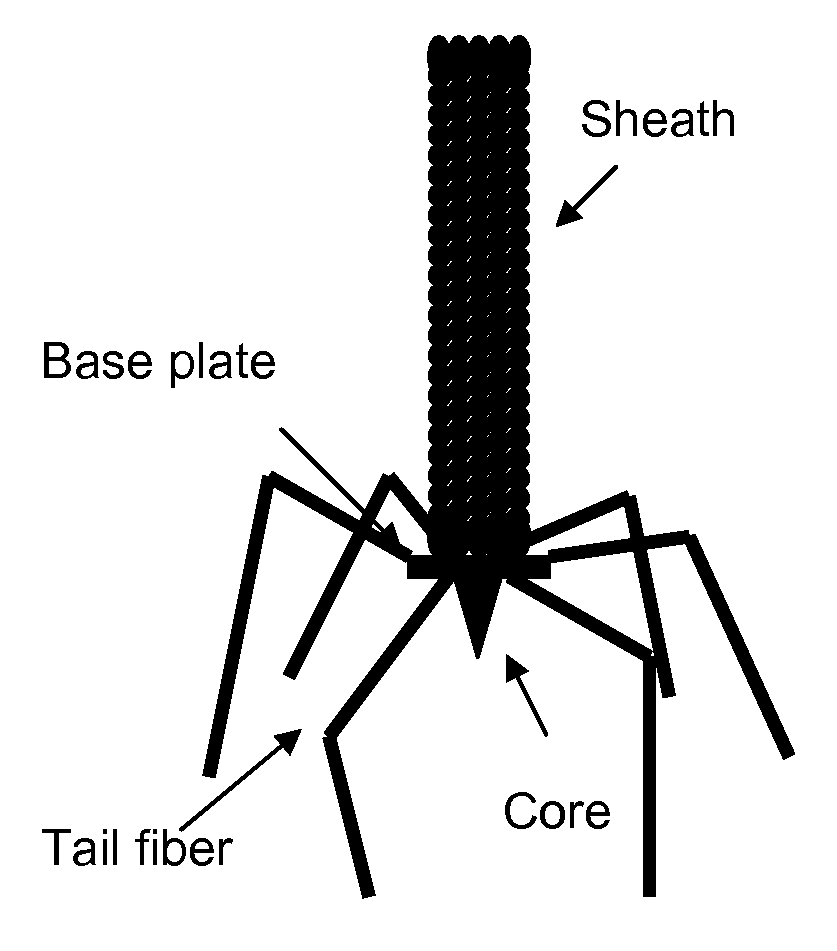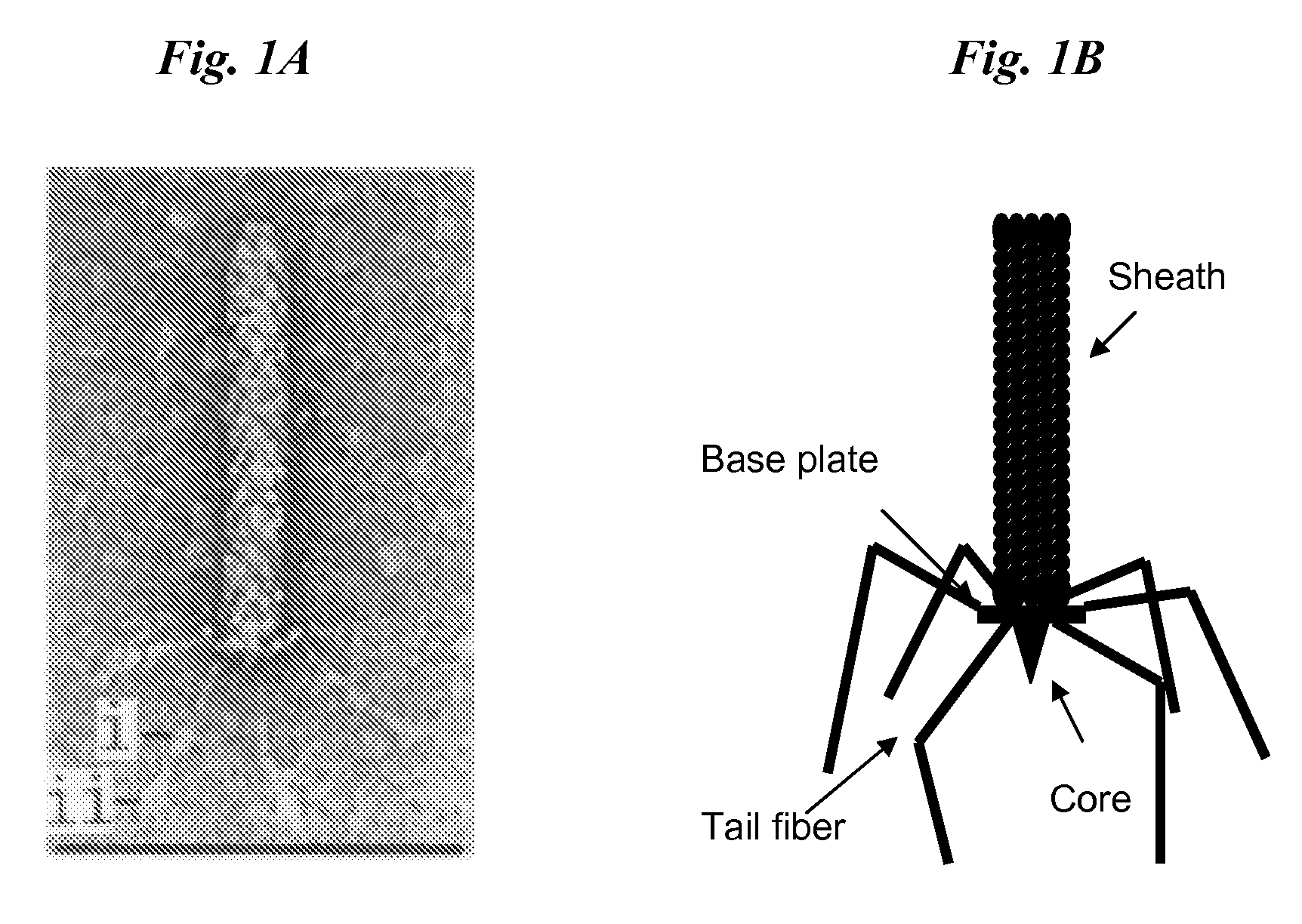Inhibition of yersinia pestis
a technology of yersinia pestis and inhibition, which is applied in the field of targeting of y. pestis, can solve the problems of loss of membrane potential or detectable release of intracellular contents from the cell, and achieve the effect of preventing the release of intracellular contents
- Summary
- Abstract
- Description
- Claims
- Application Information
AI Technical Summary
Benefits of technology
Problems solved by technology
Method used
Image
Examples
example 1
R-Type Pyocins Kill Y. pestis
[0096]Lawns of P. aeruginosa strain 13s, see FIG. 5A, and Y. pestis KIM cells, see FIGS. 5B and C, were spot tested with isolated natural R1, R2, R3, R4, and R5 pyocins. The R2, R4 and R5 pyocins were observed to effectively kill Y. pestis KIM, as shown in FIGS. 5B and 5C. In addition, modified hmw bacteriocins compromising the substitution of an R2 RBD with that of an R2, R4 or R5 RBD, each expressed in trans, also killed Y. pestis KIM, as shown in FIG. 6D. Modified hmw bacteriocins compromising the substitution of an R2 RBD with that of an R1, R2, R3, R4 or R5 RBD, each expressed in trans, all killed P. aeruginosa strain 13s, see FIG. 6A, but not E. coli C, see FIG. 6C. The modified pyocin comprising the R5 RBD also killed an R5-sensitive, R2-resistant P. aeruginosa strain, see FIG. 6B, as well as Y. pestis KIM, see FIG. 6D.
example 2
R2 Pyocin Mediated Killing of Y. pestis
[0097]An overnight culture of Y. pestis KIM cells was freshly diluted 1:10 or 1:50 in TSB in three identical 96-well plates. The cultures in the plates were incubated with R2 pyocin at 30° C. for 1, 3, or 6 hours. Portions of the cell / pyocin mixtures were then diluted and spotted on TSA plates, which were then incubated overnight at 30° C. Even one hour of incubation with pyocin at 30° C. was observed to produce cell killing. By determining the fractional survival of a known number of Y. pestis bacteria incubated with an unknown number of pyocin particles and deploying the method of Poisson, the number of pyocin particles added to each culture was determined. The number of pyocin particles is related to the fraction of bacterial survivors in a Poisson distribution, m=−1 nS, where m=the average number of lethal events / cell and S is the fraction of survivors. The total number of active pyocin particles / ml=m×cells / ml.
[0098]The results are shown b...
example 3
Y. pestis Specific Killing
[0099]The R2, R4 and R5 pyocins were observed to effectively kill Y. pestis KIM, but were not active against three other tested Yersinia species: namely Y. enterocolitica, Y. fredericksenii, and Y. pseudotuberculosis. Thus, R-2, R-4 and R-5 pyocins can distinguish Y. pestis from at least three other common Yersinia species (the negative data not shown).
PUM
| Property | Measurement | Unit |
|---|---|---|
| Composition | aaaaa | aaaaa |
| Molecular weight | aaaaa | aaaaa |
| Antimicrobial properties | aaaaa | aaaaa |
Abstract
Description
Claims
Application Information
 Login to View More
Login to View More - R&D
- Intellectual Property
- Life Sciences
- Materials
- Tech Scout
- Unparalleled Data Quality
- Higher Quality Content
- 60% Fewer Hallucinations
Browse by: Latest US Patents, China's latest patents, Technical Efficacy Thesaurus, Application Domain, Technology Topic, Popular Technical Reports.
© 2025 PatSnap. All rights reserved.Legal|Privacy policy|Modern Slavery Act Transparency Statement|Sitemap|About US| Contact US: help@patsnap.com



